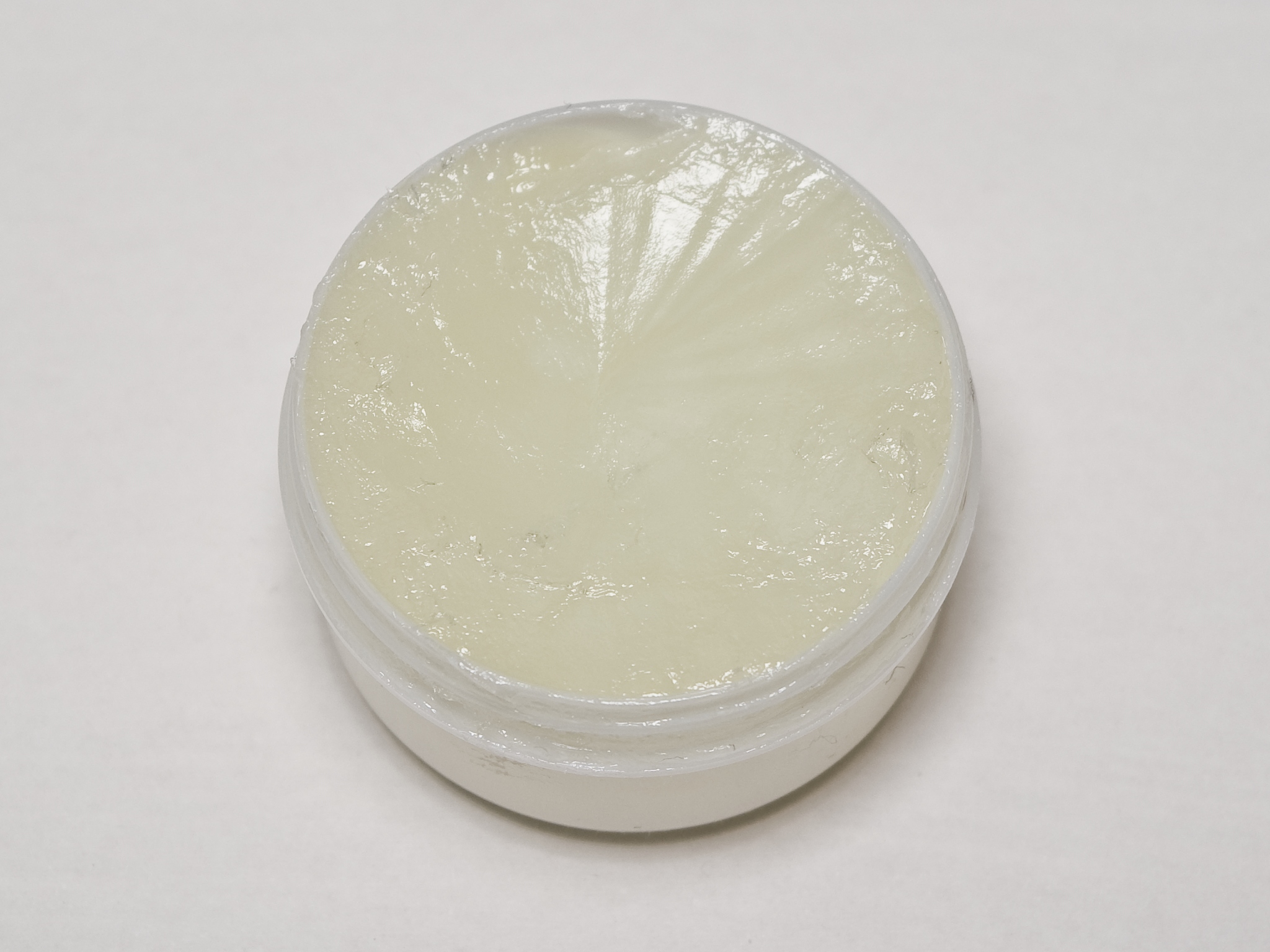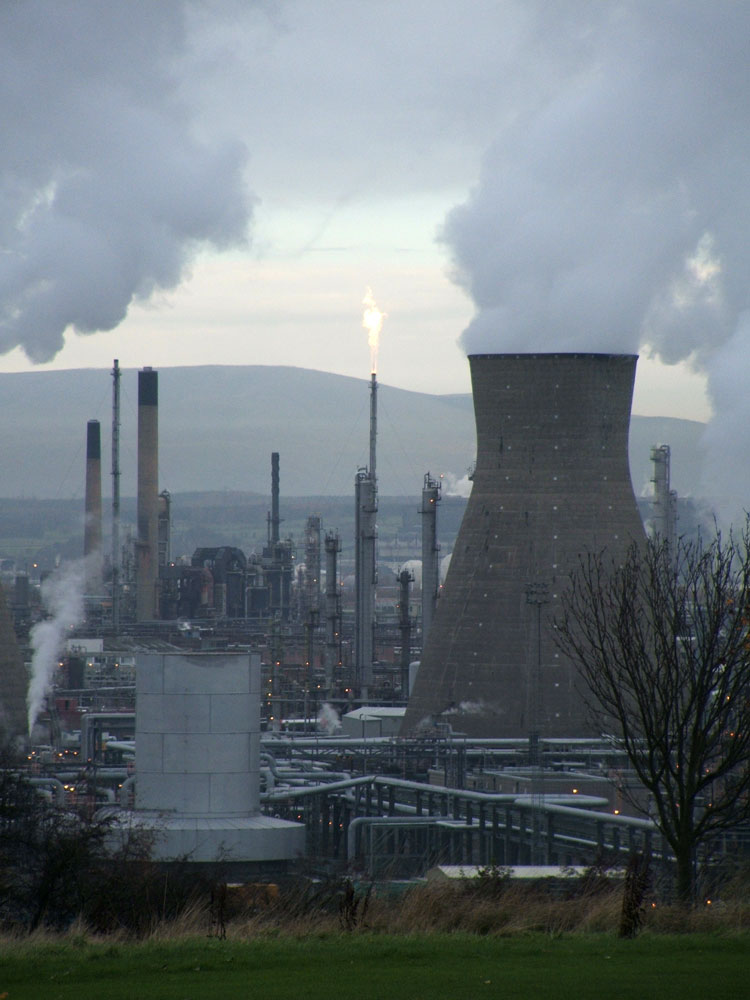|
Icky-pick
Icky-pick or icky-pic is a gelatinous cable compound used in outdoor-rated communications cables, including both twisted-pair copper cabling and fiber-optic cabling. "PIC" is the abbreviation for "plastic insulated cable". The cable is filled with an "icky" substance. The filled cable itself, therefore, is called an "icky PIC". Icky-pick has two primary functions: * Deter animals from biting and damaging the cable due to the smell and taste of the gel * Seal any nick or gash in the outer jacket if they do bite it, preventing water from entering the cable and damaging it by corrosion and freeze expansion The actual icky-pick compound is a very thick petroleum-based substance e.g. petroleum jelly, and is only rated for outdoor use, frequently direct-buried in the ground. An outdoor cable spliced onto an indoor terminal block is prone to leak the gelatin, hence in many situations the icky-pic cable is spliced outside the building to a short run of normal cable which runs through ... [...More Info...] [...Related Items...] OR: [Wikipedia] [Google] [Baidu] |
Petroleum Jelly
Petroleum jelly, petrolatum, white petrolatum, soft paraffin, or multi-hydrocarbon, CAS number 8009-03-8, is a semi-solid mixture of hydrocarbons (with carbon numbers mainly higher than 25), originally promoted as a topical ointment for its healing properties. The Vaseline brand is a well known American brand of petroleum jelly since 1870. After petroleum jelly became a medicine-chest staple, consumers began to use it for cosmetic purposes and for many ailments including toenail fungus, genital rashes (non- STD), nosebleeds, diaper rash, and common colds. Its folkloric medicinal value as a "cure-all" has since been limited by better scientific understanding of appropriate and inappropriate uses. It is recognized by the U.S. Food and Drug Administration (FDA) as an approved over-the-counter (OTC) skin protectant and remains widely used in cosmetic skin care, where it is often loosely referred to as mineral oil. History Marco Polo in 1273 described the oil exportation of B ... [...More Info...] [...Related Items...] OR: [Wikipedia] [Google] [Baidu] |
Filled Cable
In telecommunication, a filled cable is a cable that has a non-hygroscopic material, usually a gel called icky-pick, inside the jacket or sheath. The nonhygroscopic material fills the spaces between the interior parts of the cable, preventing moisture from entering minor leaks in the sheath and migrating inside the cable. A metallic cable filled with a dielectric material, such as a coaxial cable or a metal waveguide A waveguide is a structure that guides waves, such as electromagnetic waves or sound, with minimal loss of energy by restricting the transmission of energy to one direction. Without the physical constraint of a waveguide, wave intensities de ..., is not considered to be a "filled cable". References Further reading See TelcordiGR-421-CORE ''Generic Requirements for Metallic Telecommunications Cables,'' for filled, polyolefin-insulated conductor (PIC) cable requirements. Signal cables {{telecomm-stub ... [...More Info...] [...Related Items...] OR: [Wikipedia] [Google] [Baidu] |
Cable Compound
Cable compounds are materials used to prevent the ingress of moisture into telecommunication and power transmission cables. The compound used varies depending upon the type of cable; generally, they are either soft waxy compounds (for use in copper-wire telecom cables), soft thixotropic gels with a consistency similar to that of hair gel (for use in optical fibre cables), or resin/polymer thickened oils (for use in paper insulated energy cables). A cable with such a compound is called a filled cable. Cable compounds are formulated and manufactured to have very good electrical resistance properties to ensure good functioning of the filled cable. Icky-pick Icky-pick or icky-pic is a gelatinous cable compound used in outdoor-rated communications cables, including both twisted-pair copper cabling and fiber-optic cabling. "PIC" is the abbreviation for "plastic insulated cable". The cable is filled wi ... is a common gel-type compound used in outdoor fiber-optic cables. References ... [...More Info...] [...Related Items...] OR: [Wikipedia] [Google] [Baidu] |
Communications Cable
In electrical engineering, a transmission line is a specialized cable or other structure designed to conduct electromagnetic waves in a contained manner. The term applies when the conductors are long enough that the wave nature of the transmission must be taken into account. This applies especially to radio-frequency engineering because the short wavelengths mean that wave phenomena arise over very short distances (this can be as short as millimetres depending on frequency). However, the theory of transmission lines was historically developed to explain phenomena on very long telegraph lines, especially submarine telegraph cables. Transmission lines are used for purposes such as connecting radio transmitters and receivers with their antennas (they are then called feed lines or feeders), distributing cable television signals, trunklines routing calls between telephone switching centres, computer network connections and high speed computer data buses. RF engineers commonl ... [...More Info...] [...Related Items...] OR: [Wikipedia] [Google] [Baidu] |
Twisted Pair
Twisted pair cabling is a type of wiring used for communications in which two conductors of a single circuit are twisted together for the purposes of improving electromagnetic compatibility. Compared to a single conductor or an untwisted balanced pair, a twisted pair reduces electromagnetic radiation from the pair and crosstalk between neighboring pairs and improves rejection of external electromagnetic interference. It was invented by Alexander Graham Bell. For additional noise immunity, twisted-pair cabling may be shielded. Cable with shielding is known as shielded twisted pair (STP) and without as unshielded twisted pair (UTP). Explanation A twisted pair can be used as a balanced line, which as part of a balanced circuit can greatly reduce the effect of noise currents induced on the line by coupling of electric or magnetic fields. The idea is that the currents induced in each of the two wires are very nearly equal. The twisting ensures that the two wires are on ave ... [...More Info...] [...Related Items...] OR: [Wikipedia] [Google] [Baidu] |
Fiber-optic Cable
A fiber-optic cable, also known as an optical-fiber cable, is an assembly similar to an electrical cable, but containing one or more optical fibers that are used to carry light. The optical fiber elements are typically individually coated with plastic layers and contained in a protective tube suitable for the environment where the cable is used. Different types of cable are used for different applications, for example, long distance telecommunication, or providing a high-speed data connection between different parts of a building. Design Optical fiber consists of a core and a cladding layer, selected for total internal reflection due to the difference in the refractive index between the two. In practical fibers, the cladding is usually coated with a layer of acrylate polymer or polyimide. This coating protects the fiber from damage but does not contribute to its optical waveguide properties. Individual coated fibers (or fibers formed into ribbons or bundles) then have a tough ... [...More Info...] [...Related Items...] OR: [Wikipedia] [Google] [Baidu] |
Petroleum
Petroleum, also known as crude oil, or simply oil, is a naturally occurring yellowish-black liquid mixture of mainly hydrocarbons, and is found in geological formations. The name ''petroleum'' covers both naturally occurring unprocessed crude oil and petroleum products that consist of refined crude oil. A fossil fuel, petroleum is formed when large quantities of dead organisms, mostly zooplankton and algae, are buried underneath sedimentary rock and subjected to both prolonged heat and pressure. Petroleum is primarily recovered by oil drilling. Drilling is carried out after studies of structural geology, sedimentary basin analysis, and reservoir characterisation. Recent developments in technologies have also led to exploitation of other unconventional reserves such as oil sands and oil shale. Once extracted, oil is refined and separated, most easily by distillation, into innumerable products for direct use or use in manufacturing. Products include fuels such as gasol ... [...More Info...] [...Related Items...] OR: [Wikipedia] [Google] [Baidu] |
Direct-buried Cable
Direct-buried cable (DBC) is a kind of communications or transmissions electrical cable which is especially designed to be buried under the ground without any other cover, sheath, or duct to protect it. Most direct-buried cable is built to specific tolerances to heat, moisture, conductivity, and soil acidity. Unlike standard telecommunications and power cables, which have only a thin layer of insulation and a waterproof outer cover, DBC consists of multiple layers of heavy metallic-banded sheathing, reinforced by heavy rubber covers, shock absorbing gel, wrapped thread-fortified waterproof tape, and stiffened by a heavy metal core. DBC is preferable in some areas since it is more resistant to being the focus of lightning discharges. Communications Most cable of this kind is coaxial or bundled fiber-optic cable. In the 20th century much of it was filled cable. Direct-buried cable is cheaper and easier to lay than other kinds of cable that require protection from the earth. Ho ... [...More Info...] [...Related Items...] OR: [Wikipedia] [Google] [Baidu] |
Electrical Conduit
An electrical conduit is a tube used to protect and route electrical wiring in a building or structure. Electrical conduit may be made of metal, plastic, fiber, or fired clay. Most conduit is rigid, but flexible conduit is used for some purposes. Conduit is generally installed by electricians at the site of installation of electrical equipment. Its use, form, and installation details are often specified by wiring regulations, such as the US National Electrical Code (NEC) and other building codes. History Some early electric lighting installations made use of existing gas pipe serving gas light fixtures which had been converted to electric lamps. Since this technique provided very good mechanical protection for interior wiring, it was extended to all types of interior wiring and by the early 20th century purpose-built couplings and fittings were manufactured for electrical use. However, most electrical codes now prohibit the routing of electrical conductors through gas piping ... [...More Info...] [...Related Items...] OR: [Wikipedia] [Google] [Baidu] |
Paint Thinner
A paint thinner is a solvent used to thin oil-based paints. Solvents labeled "paint thinner" are usually mineral spirits having a flash point at about 40 °C (104 °F), the same as some popular brands of charcoal starter. Common solvents historically used as paint thinners include: * Mineral spirits (North America)/White spirit (United Kingdom and Ireland) * Acetone * Turpentine * Naphtha * Toluene * Lacquer thinner * Methyl ethyl ketone (MEK) * Dimethylformamide (DMF) * 2-Butoxyethanol, or any of the other glycol ethers Less common solvents used as paint thinner include: * Ethylbenzene * Xylene * ''n''-Butyl acetate * Butanol Exposure to vapors created by paint containing thinner or its cleanup may be hazardous. The American Conference of Governmental Industrial Hygienists has established threshold limit values (TLVs) for most of these compounds. TLV is defined as the maximum concentration in air which can be breathed by a normal person (i.e., excluding children, p ... [...More Info...] [...Related Items...] OR: [Wikipedia] [Google] [Baidu] |
Petroleum Products
Petroleum products are materials derived from crude oil (petroleum) as it is processed in oil refineries. Unlike petrochemicals, which are a collection of well-defined usually pure organic compounds, petroleum products are complex mixtures. The majority of petroleum is converted to petroleum products, which includes several classes of fuels. According to the composition of the crude oil and depending on the demands of the market, refineries can produce different shares of petroleum products. The largest share of oil products is used as "energy carriers", i.e. various grades of fuel oil and gasoline. These fuels include or can be blended to give gasoline, jet fuel, diesel fuel, heating oil, and heavier fuel oils. Heavier (less volatile) fractions can also be used to produce asphalt, tar, paraffin wax, lubricating and other heavy oils. Refineries also produce other chemicals, some of which are used in chemical processes to produce plastics and other useful materials. Since petroleu ... [...More Info...] [...Related Items...] OR: [Wikipedia] [Google] [Baidu] |





